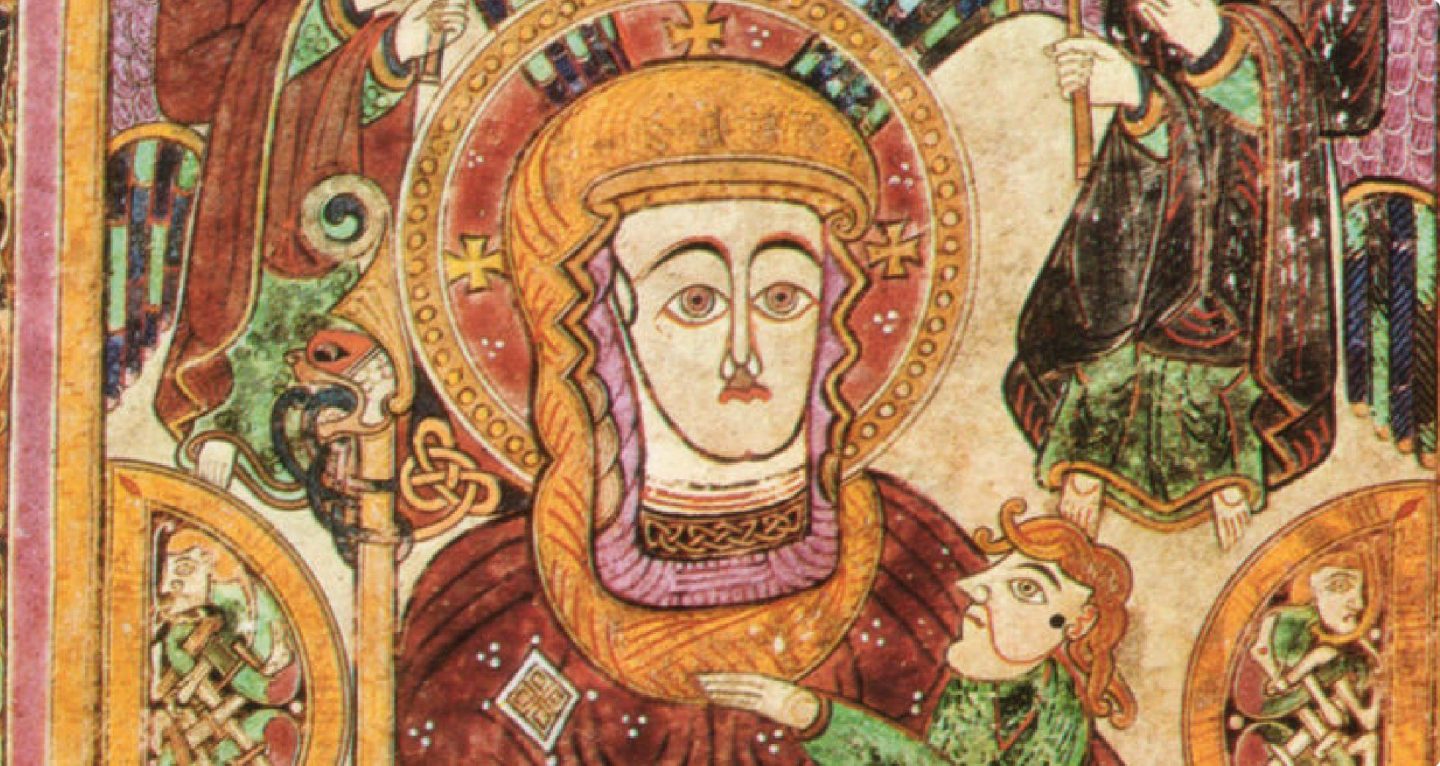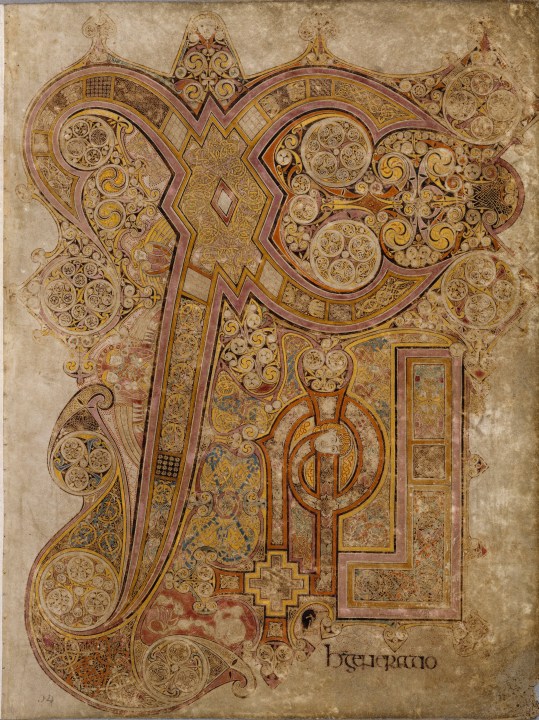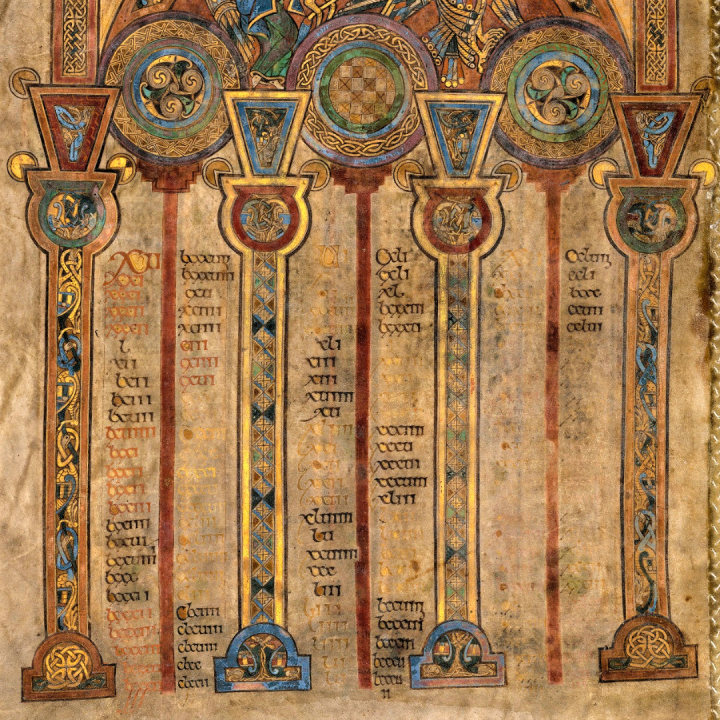
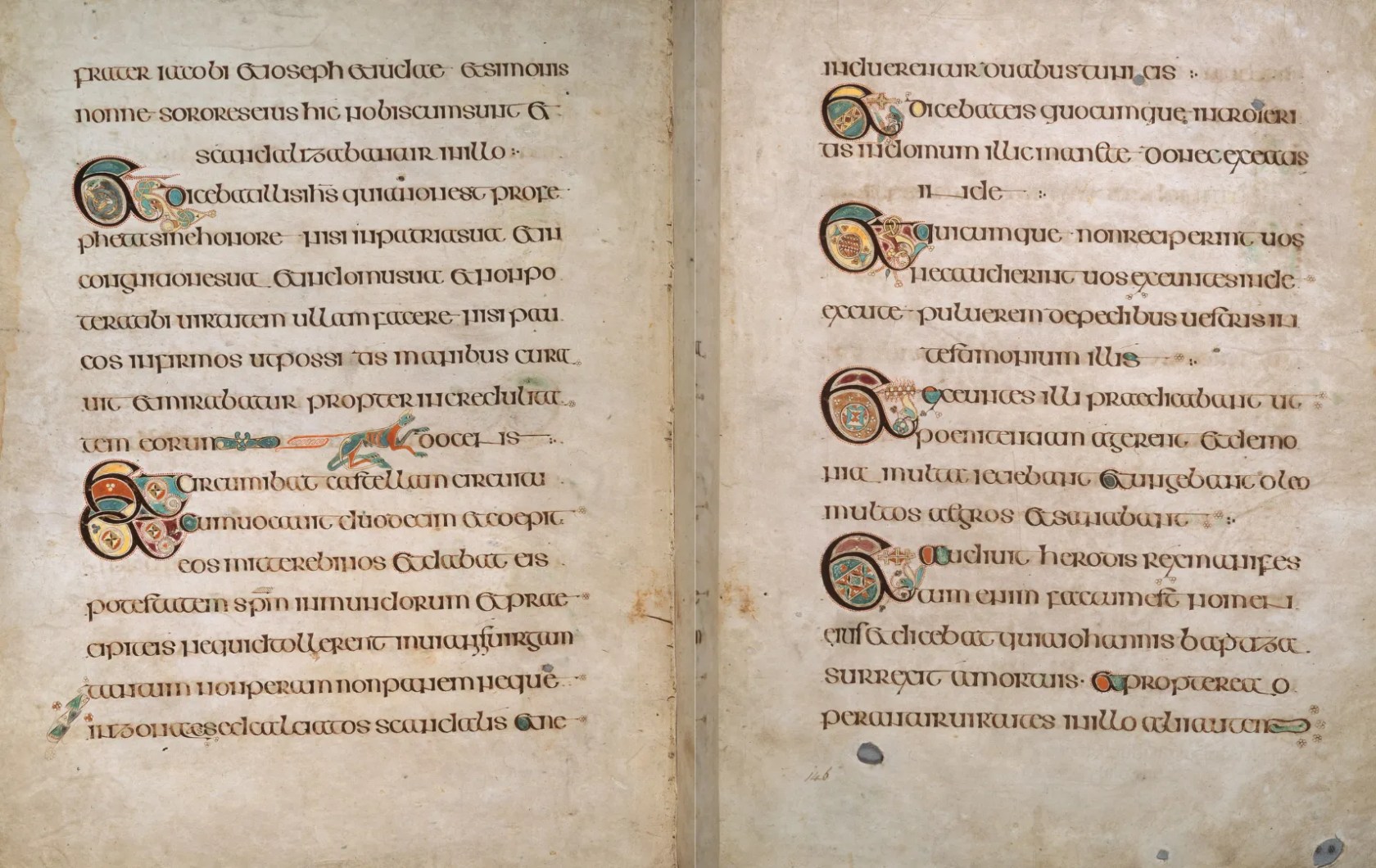
The formal script in the Book of Kells is known as ‘Insular majuscule’. The Insular script that developed in Ireland spread to Anglo-Saxon England and continental Europe as the Irish monks carried out their missionary work.
It was based on scripts from antiquity but adapted so that the detached letters were easy to read with instantly recognisable abbreviations for frequently used words such as Ihs (Iesus), XPS (Christus), DS (Deus). The Irish scribes saw Latin in visual terms with its own set of graphic symbols. Not only were the letters not joined up but in contrast to the scriptio continua (Latin for ‘continuous script’ without breaks between words or sentences) of earlier Latin texts the individual words were also separated.
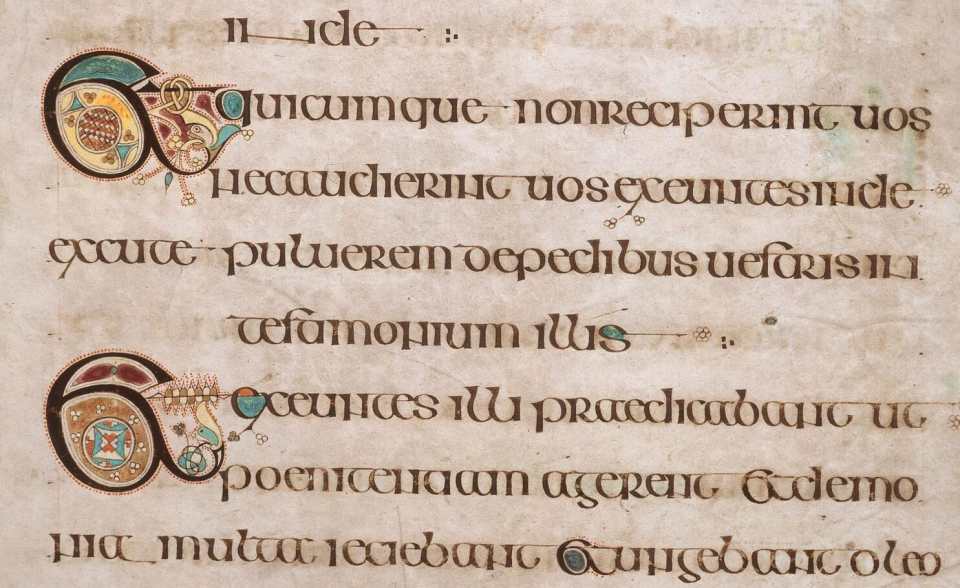
The minor decoration that enlivens the pages of Kells also had an important function. The Gospels were written in Latin, the language of the Church, but Irish was the first language of both the monks and the people. Punctuation of the text and capitalisation of the first letter of each new sentence were important for phrasing so that the reader paused in the correct places when reading aloud. In Irish manuscripts punctuation and decoration became inextricably linked. Examples of decorated initials and full stops can be seen across this opening.

In the Gospel of Mark: folios 145 – 146r, the word Et (‘And’) recurs seven times across this opening, each uniquely designed. The scribes treated letter forms as an opportunity to display their creativity. A word may recur but its design is never repeated. The text on the right-hand folio describes Jesus Christ sending out the twelve apostles to preach: each Et features an animal head with an interlaced tongue terminating in foliage, perhaps a visual allusion to the act of preaching.
